Old Dog
Well-known member
I thought I would start out the year with something different :woohoo: So different that a little history seems in order. It's not so much a wiffer but more a Jap46 model.
When the tide of the war turned against Japan, it was soon realized that some means to attack the U.S. mainland had to be acquired. It was to be Nakajima who would attempt to provide a strategic long range bomber. The man behind the project was Chikuhei Nakajima, the chairman and engineer of Nakajima. Motivated by his fears over the inability of the Japanese to reach and destroy U.S. industrial capacity, Chikuhei tried to convince the IJN and IJA of the need for a strategic bomber but both services refused to consider his ideas. So without official sanction he invested a portion of Nakajima's resources to draft designs for a bomber that could take off from Japanese bases, cross the Pacific, attack targets on the West Coast of America and either return to their original bases or elsewhere in Japanese or Axis held territory. Nakajima gave the design work the name "Project Z". By April of 1943 Nakajima had assembled drafts and design studies and again presented them to the IJN and IJA.
This time both services took notice but each had their own ideas about the design. By June of 1943 Nakajima had received the input from both services and had begun work on a final design. The design was envisioned to be powered by six of the Nakajima Ha-54, 36 cylinder engines producing some 5,000hp and which was two Ha-44 engines paired together. This engine would not be ready for some time and in fact due to cooling problems and at wars end was still only a prototype. Nakajima was forced to settle for the experimental Ha-53 engines of 2,500hp which would have lowered performance estimates. As work progressed on Project Z, plans were made to assemble and house the bombers production line. By the fall of 1943 the plans had been completed and construction of the new facility had begun. By January 1944 the Project Z moniker was dropped and changed to Fugaku which means Mount Fuji.
More pressing demands on Nakajima resulted in less work being done on the Fugaku. To compound the problem, by the time the design was nearing completion, Japan was on the defensive and the chances of producing the Fugaku, let alone using it to attack America were about nil. The fall of Saipan in 1944 sealed the Fugaku's fate. All work was stopped and the plans, calculations and drafts were shelved. Work on the production facility was halted prior to completion and left unfinished. With the Japanese surrender, all documentation was to be destroyed. The papers that survive to this day, including a number of the drafts for various proposals were mislaid or kept for safe keeping by individuals. As a note, although the designation G10N has been used in print for this aircraft for many years, there as been no confirmation in historical sources that confirms this was the case.
Personally I think Mr. Nakajima had been hitting the Saki a little too hard considering his company had spent the last half of the war trying to put a four engine bomber in the air and only managing to complete three prototypes. Do you think the design might have been influenced by the B-29?
The kit is by Fujima and I was mostly disappointed in it as I have seen much better kits from them than this one. Some parts of it look as if they were planning a snap together kit, which I found out the hard way. The clear parts were trash and they only supplied the larger ones anyway. After trying to get them acceptable I decided to just paint them all black. The kit is seriously tail heavy. Early on I added two 2" 3/8" bolts in the fuselage ahead of the wing filling most of the space aft of the cockpit only to find it still tail sat when the gear was installed. I ended up filling the cockpit to the brim with shot to get the nose to stay down. In any event if you want to see more of the kit my review is here. Even in 1/144 scale this is a big kit, the prototype would have had a 216' wing span and a length of 150'.
Enough verbiage here is the end result of my struggles
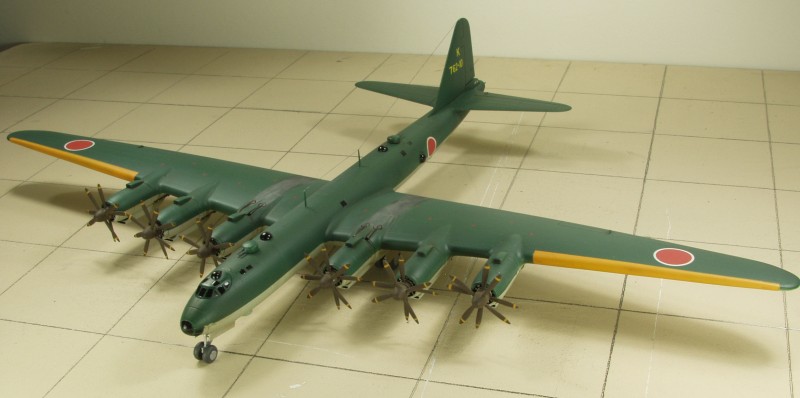
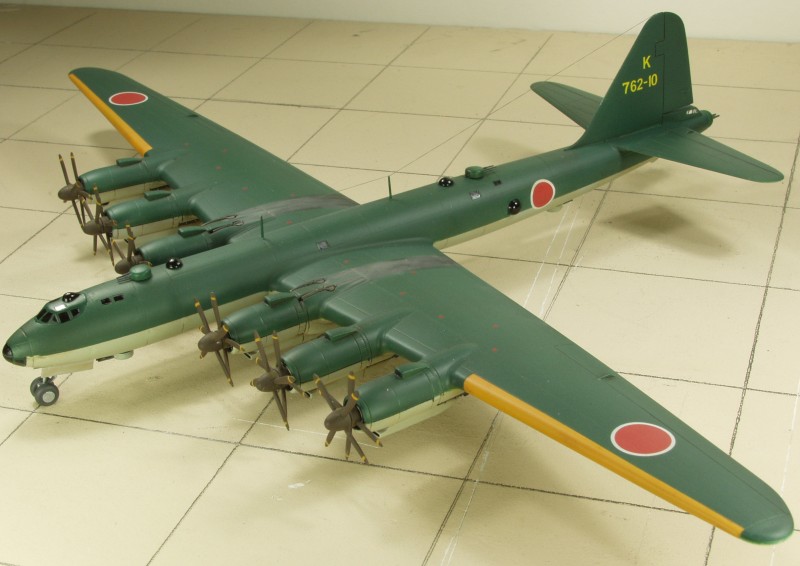
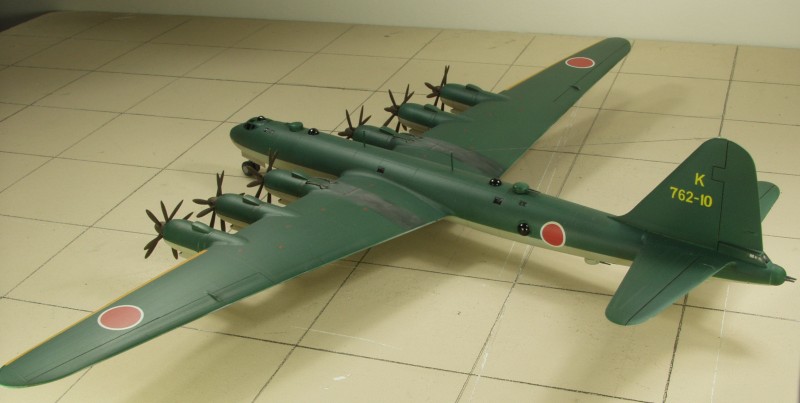
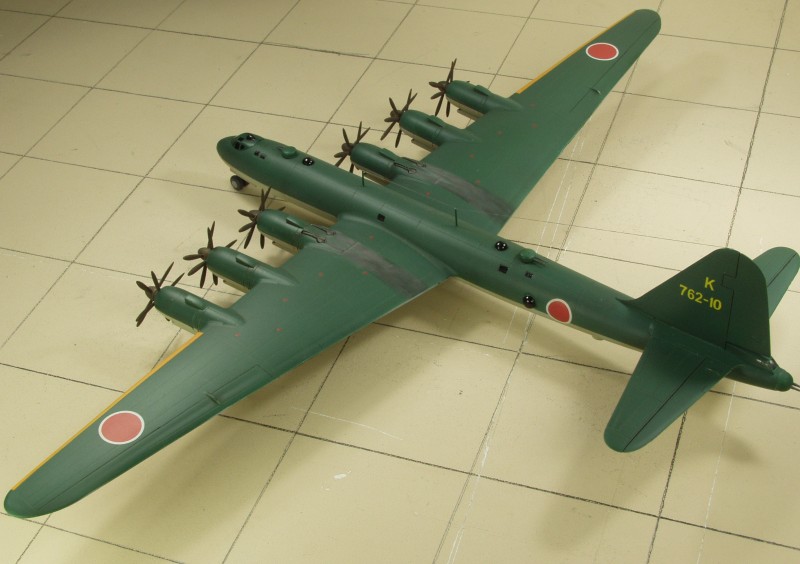
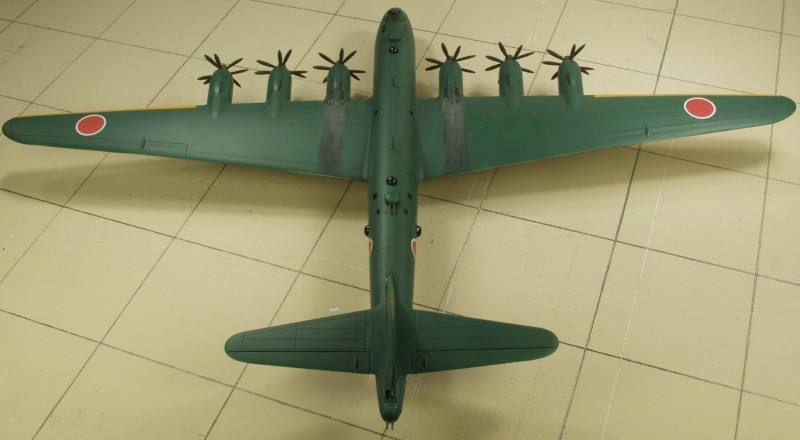
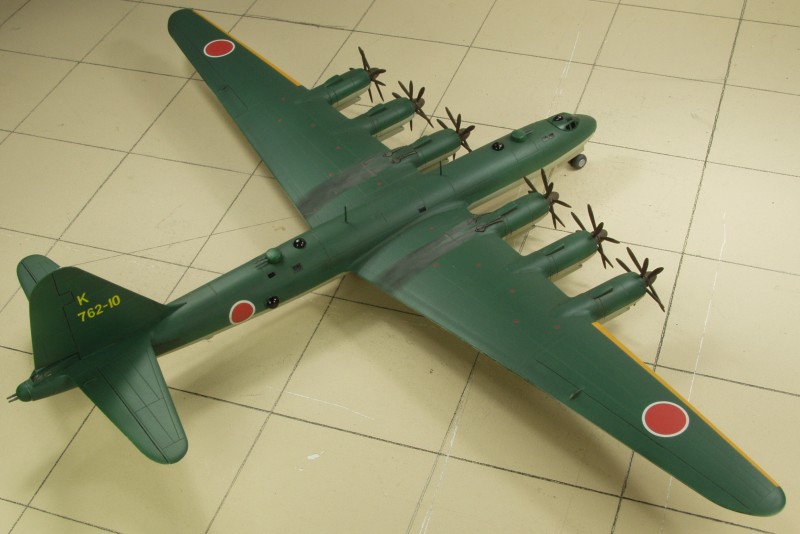
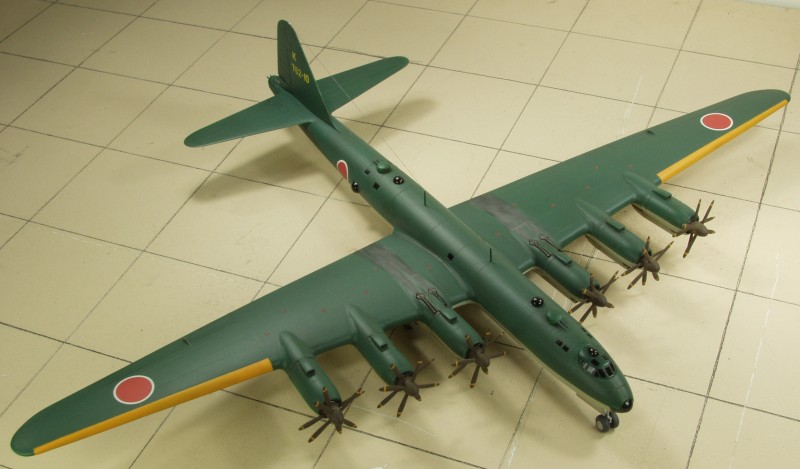
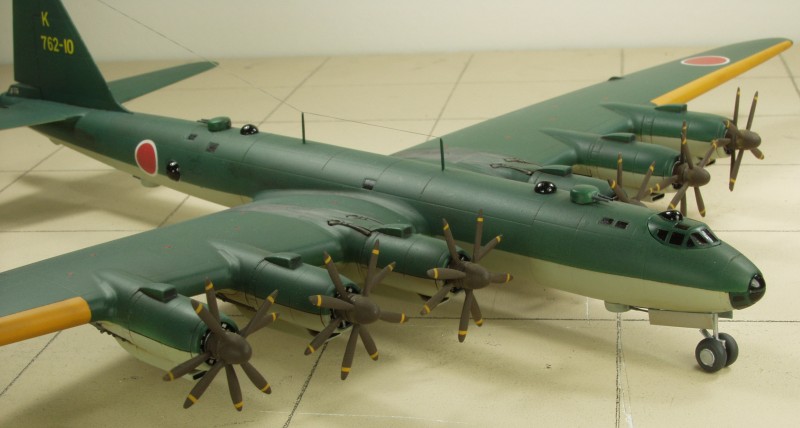
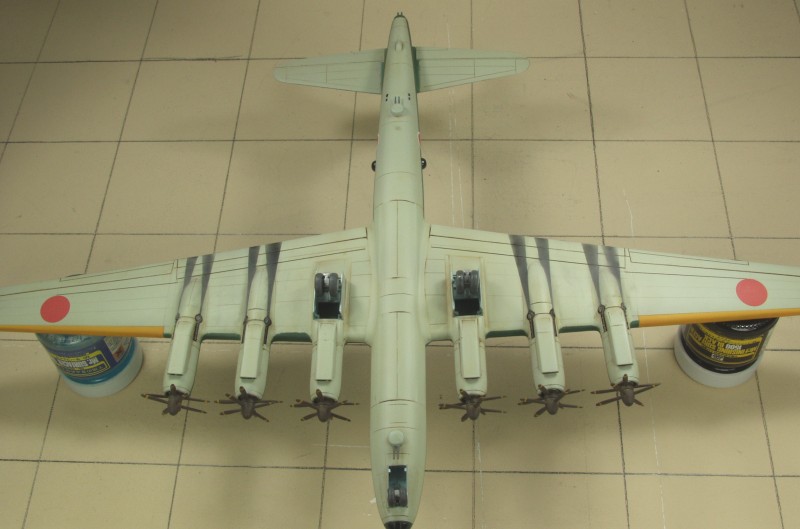
My eyes still hurt from masking the cockpit and painting all those propeller stripes but none the less I have another 1/144 kit on the bench.
Thanks for looking !
When the tide of the war turned against Japan, it was soon realized that some means to attack the U.S. mainland had to be acquired. It was to be Nakajima who would attempt to provide a strategic long range bomber. The man behind the project was Chikuhei Nakajima, the chairman and engineer of Nakajima. Motivated by his fears over the inability of the Japanese to reach and destroy U.S. industrial capacity, Chikuhei tried to convince the IJN and IJA of the need for a strategic bomber but both services refused to consider his ideas. So without official sanction he invested a portion of Nakajima's resources to draft designs for a bomber that could take off from Japanese bases, cross the Pacific, attack targets on the West Coast of America and either return to their original bases or elsewhere in Japanese or Axis held territory. Nakajima gave the design work the name "Project Z". By April of 1943 Nakajima had assembled drafts and design studies and again presented them to the IJN and IJA.
This time both services took notice but each had their own ideas about the design. By June of 1943 Nakajima had received the input from both services and had begun work on a final design. The design was envisioned to be powered by six of the Nakajima Ha-54, 36 cylinder engines producing some 5,000hp and which was two Ha-44 engines paired together. This engine would not be ready for some time and in fact due to cooling problems and at wars end was still only a prototype. Nakajima was forced to settle for the experimental Ha-53 engines of 2,500hp which would have lowered performance estimates. As work progressed on Project Z, plans were made to assemble and house the bombers production line. By the fall of 1943 the plans had been completed and construction of the new facility had begun. By January 1944 the Project Z moniker was dropped and changed to Fugaku which means Mount Fuji.
More pressing demands on Nakajima resulted in less work being done on the Fugaku. To compound the problem, by the time the design was nearing completion, Japan was on the defensive and the chances of producing the Fugaku, let alone using it to attack America were about nil. The fall of Saipan in 1944 sealed the Fugaku's fate. All work was stopped and the plans, calculations and drafts were shelved. Work on the production facility was halted prior to completion and left unfinished. With the Japanese surrender, all documentation was to be destroyed. The papers that survive to this day, including a number of the drafts for various proposals were mislaid or kept for safe keeping by individuals. As a note, although the designation G10N has been used in print for this aircraft for many years, there as been no confirmation in historical sources that confirms this was the case.
Personally I think Mr. Nakajima had been hitting the Saki a little too hard considering his company had spent the last half of the war trying to put a four engine bomber in the air and only managing to complete three prototypes. Do you think the design might have been influenced by the B-29?
The kit is by Fujima and I was mostly disappointed in it as I have seen much better kits from them than this one. Some parts of it look as if they were planning a snap together kit, which I found out the hard way. The clear parts were trash and they only supplied the larger ones anyway. After trying to get them acceptable I decided to just paint them all black. The kit is seriously tail heavy. Early on I added two 2" 3/8" bolts in the fuselage ahead of the wing filling most of the space aft of the cockpit only to find it still tail sat when the gear was installed. I ended up filling the cockpit to the brim with shot to get the nose to stay down. In any event if you want to see more of the kit my review is here. Even in 1/144 scale this is a big kit, the prototype would have had a 216' wing span and a length of 150'.
Enough verbiage here is the end result of my struggles









My eyes still hurt from masking the cockpit and painting all those propeller stripes but none the less I have another 1/144 kit on the bench.
Thanks for looking !


